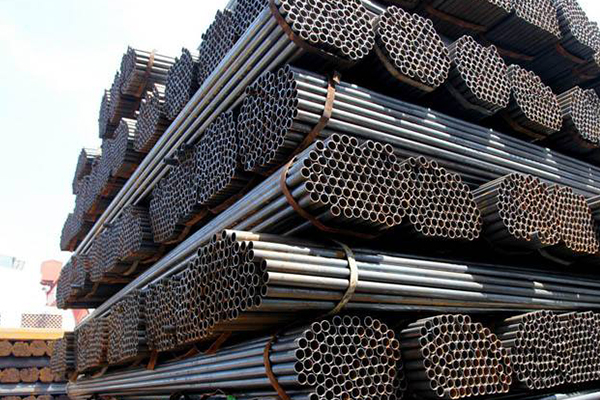Scaffolding is a critical component in the construction industry, providing essential support and access for workers engaged in building, repairing, or maintaining structures. Among the various types of scaffolding systems, fitting scaffold stands out for its versatility and adaptability in complex construction environments. In this article, we will explore the applications of fitting scaffold, highlighting how it can be utilized across different construction projects to ensure safety, efficiency, and effectiveness. As a leading scaffolding provider, “Wancheng Tai” is dedicated to offering high-quality scaffolding solutions tailored to the specific needs of the construction industry.
What is Fitting Scaffold?
Fitting scaffold, also known as tube and clamp scaffold, is a highly adaptable scaffolding system composed of steel or aluminum tubes (pipes) and a variety of clamps (fittings). This system allows for the construction of scaffolding structures of virtually any shape and size, making it ideal for projects with unique or challenging requirements. Unlike prefabricated scaffolding systems, it can be customized on-site, offering flexibility that is crucial for complex and non-standard construction projects.

Key Applications of Fitting Scaffold
1. Complex and Irregular Structures
One of the primary applications of fitting scaffold is in the construction or maintenance of complex and irregular structures. Unlike modular scaffolding systems, which are often limited by their predefined dimensions and shapes, fitting scaffold can be configured to match the exact contours and angles of any structure. This makes it particularly useful in the following scenarios:
-
Historical Building Restoration: Restoring historical buildings often requires scaffolding to navigate around intricate architectural features such as domes, spires, and ornate facades. Fitting scaffold’s flexibility allows it to be tailored to these unique shapes, providing safe access for workers without damaging the structure.
-
Bridges and Overpasses: Construction and maintenance of bridges and overpasses involve working at various angles and heights, often in confined spaces. It can be assembled to fit the specific geometry of the bridge, providing a stable platform for workers to carry out their tasks safely.
2. Industrial Applications
Fitting scaffold is widely used in industrial settings, such as oil refineries, power plants, and chemical processing facilities. These environments often involve complex piping systems, tanks, and other equipment that require regular maintenance, inspection, and repair. The adaptability of fitting scaffold makes it ideal for these applications:
-
Tank Maintenance: Large storage tanks require scaffolding that can be erected both inside and outside the tank. It can be configured to follow the curved surfaces of the tanks, providing safe access for workers performing maintenance tasks such as cleaning, painting, or welding.
-
Piping Systems: In refineries and power plants, extensive piping systems often need to be inspected or repaired. Fitting scaffold can be assembled to navigate around these systems, providing access to all necessary areas without disrupting operations.
3. High-Rise Construction
Fitting scaffold is also commonly used in high-rise construction projects where the building’s design requires scaffolding that can adapt to changing heights and angles. Whether for constructing new skyscrapers or maintaining existing ones, fitting scaffold offers the following advantages:
-
Façade Work: High-rise buildings often feature complex façades with varying angles and projections. Fitting scaffold can be customized to provide safe access to every part of the façade, ensuring that work can be completed efficiently and safely.
-
Interior Work at Height: For tasks such as installing ceilings or performing maintenance on large atriums, it can be erected inside the building to provide a stable platform for workers operating at height.

Safety Considerations and Best Practices
While fitting scaffold offers unparalleled flexibility and adaptability, it is crucial to ensure that it is assembled and used safely. At Wancheng Tai, we emphasize the importance of adhering to safety standards and best practices when using it:
-
Proper Training: Workers involved in erecting and dismantling fitting scaffold should receive proper training to ensure they understand the correct assembly procedures and safety protocols.
-
Regular Inspections: Scaffolding should be inspected regularly by a qualified professional to identify any potential issues, such as loose fittings or structural instability, and to ensure compliance with safety regulations.
-
Load Capacity Management: It is essential to consider the load capacity of the scaffolding system, ensuring that it is not overloaded with materials or equipment beyond its design limits.

Conclusione
Fitting scaffold is an invaluable tool in the construction and industrial sectors, offering the flexibility and adaptability needed to tackle complex and challenging projects. Whether working on intricate architectural features, maintaining industrial equipment, or constructing high-rise buildings, it provides a reliable and customizable solution. At Wancheng Tai, we are committed to delivering high-quality fitting scaffold systems that meet the unique needs of our clients, backed by our expertise in scaffolding solutions and a dedication to safety and quality. When it comes to complex scaffolding needs, Wancheng Tai is your trusted partner in ensuring successful and safe project outcomes.
Product: Accoppiatori per ponteggi - Accoppiatore per bretelle 48*60 , Accoppiatori per ponteggi - Accoppiatore a manicotto


